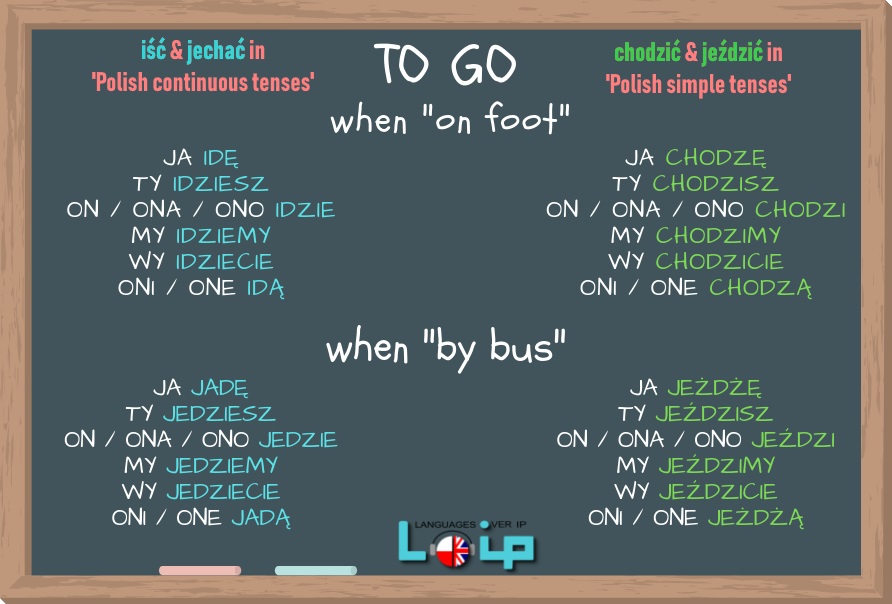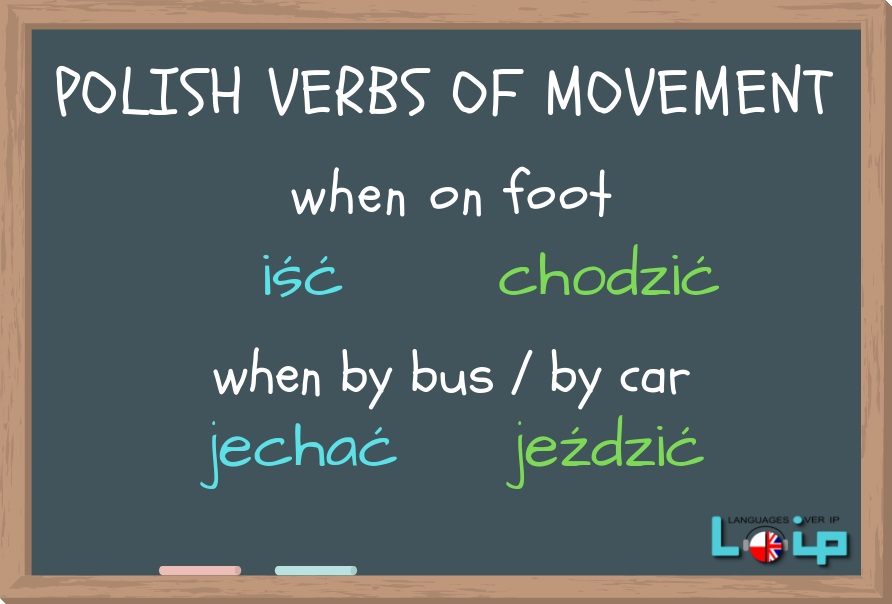In Polish we have a few equivalents of the verb „to go”, depending on the way of moving. When we go on foot, we can use „iść” or „chodzić”. When we use a means of transport, like a car or a bus, to get somewhere, we can use ” jechać” or „jeździć”. Let’s look at the pairs and the differences between them in the present tenses.
IŚĆ vs. CHODZIĆ
IŚĆ
– is used when the movement is happening now, e.g.
Idę do domu.
I’m going home.
– is used when the event is planned for the future, e.g.
Jutro ona idzie do fryzjera. Tomorrow she’s going to the hairdresser.
Iść is used in kind of Polish „present continuous„.
CHODZIĆ
– is used when the movement takes place habitually, often used with frequency adverbs (zawsze, czasami, nigdy etc.)
Ona chodzi na basen w soboty.
She goes to the swimming pool on Saturdays.
– We use chodzić after the verbs umieć and lubić, e.g.
On lubi chodzić na siłownię.
He likes going to the gym.
Chodzić is used in kind of Polish „present simple„.
JECHAĆ vs. JEŹDZIĆ
JECHAĆ
used just like „iść„.
On teraz jedzie do pracy.
He is driving / going to work now.
Jutro on jedzie do Londynu.
Tomorrow he is going to London.
JEŹDZIĆ
used just like „chodzić„
On jeździ do pracy autobusem.
He goes to work by bus.
Oni lubią jeździć za granicę.
They enjoy going abroad.
ROUND-UP

Interested in learning Polish grammar? Read about the classification of Polish verbs.

